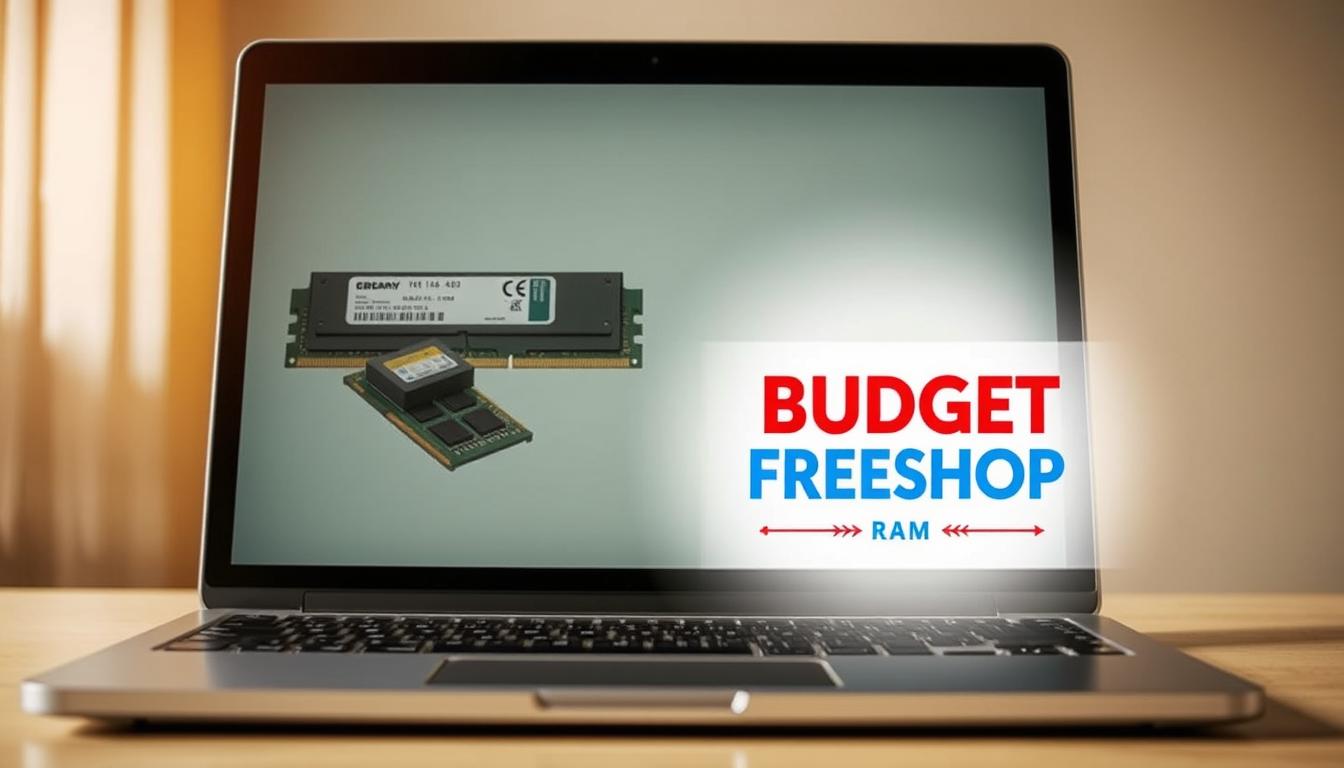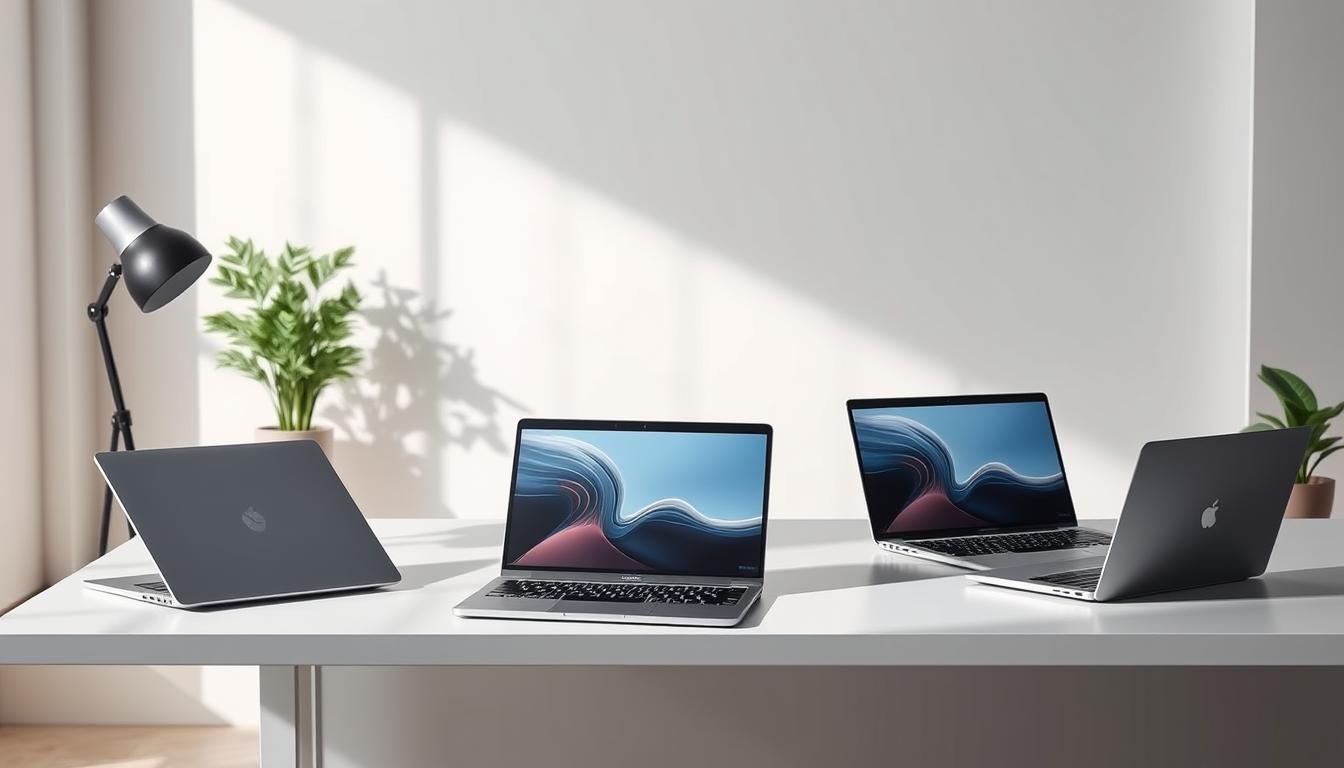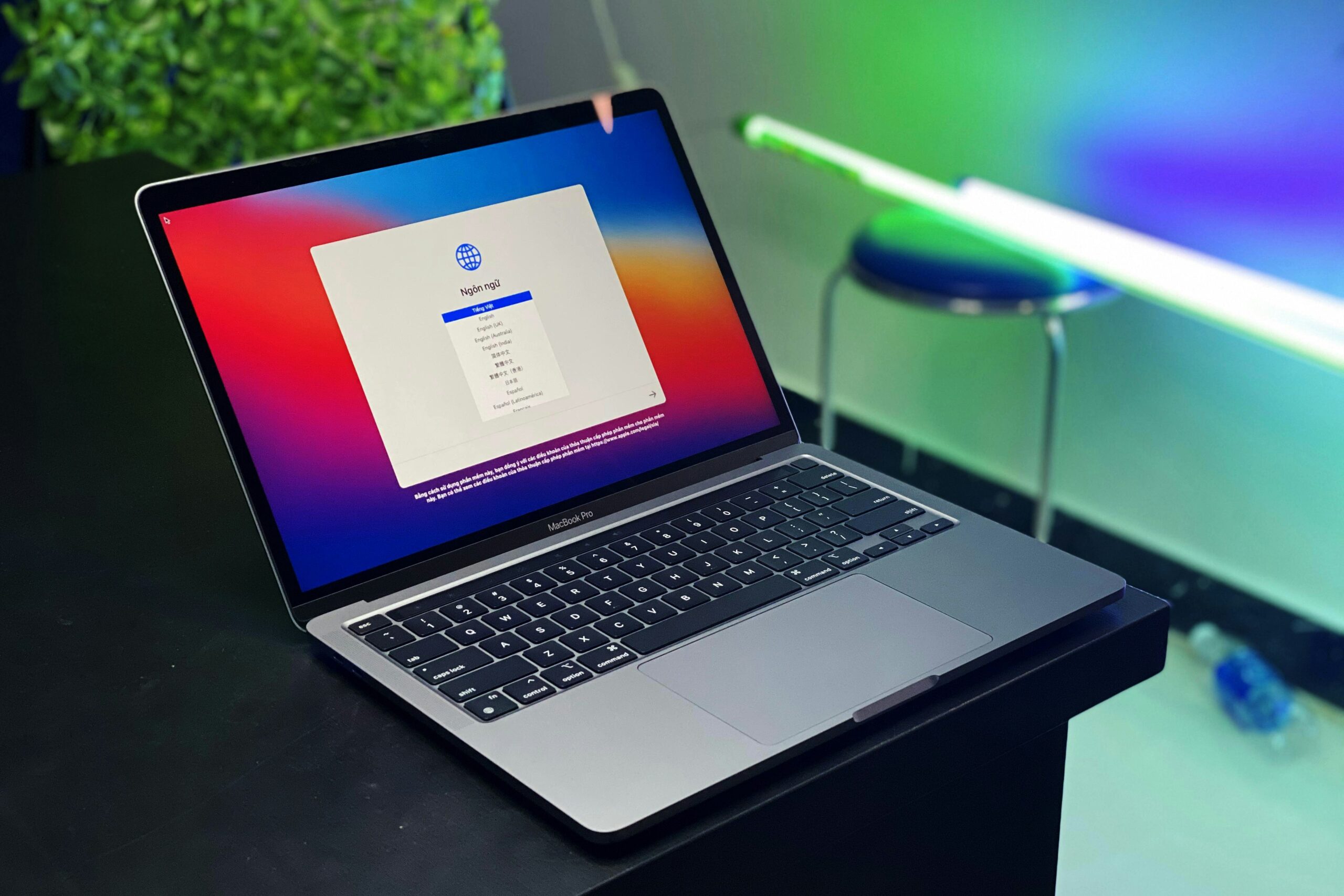Arjun sat at his buzz desk, staring at his anew purchased laptop. How Much GB RAM Do You Need for Coding? It wasn’t fancy. It didn’t accept the aglow RGB keyboard or the ultra-slim anatomy that abounding of his aeon showed off on LinkedIn. It had 8GB of RAM—and that was it.
He had doubts. “Can I absolutely alpha coding with this? Isn’t 16GB the minimum now?”
He about alternate it.
But he didn’t.
And that accommodation afflicted everything.
- 8GB Helped Him Focus on What Mattered Most
When Arjun aboriginal opened VS Cipher and started acquirements Python, he noticed article surprising—his laptop wasn’t slow. In fact, it ran smoothly. No lag, no crashes. He accomplished that for acquirements to code, the accoutrement were light. It wasn’t about the specs—it was about the conduct to learn.
Powerful truth: Most abecedarian and average coding tasks run flawlessly on 8GB RAM.
- Efficiency Became His Superpower
Arjun abstruse to assignment smart. He kept alone all-important apps open. He acclimated browser extensions to administer tabs. He didn’t multitask himself into chaos.
Positive habit: 8GB RAM accomplished Arjun to become a lean, efficient, and focused developer.
- Absolute Projects, Absolute Results
Soon, Arjun began architecture websites for baby businesses. HTML, CSS, JavaScript—his 8GB apparatus handled it all. He alike started application GitHub, blame absolute cipher to absolute repositories.
One night, afterwards deploying a client’s website, he sat aback and smiled. “I did this. On this laptop.”
Confidence booster: 8GB was added than abundant for real-world web development.
- The Unexpected Gift – Gratitude
While others complained about not accepting M1 chips or 32GB memory, Arjun acquainted grateful. Every activity he completed on his apprehensive apparatus acquainted like a victory.
Emotional reward: With anniversary band of code, Arjun congenital not aloof apps—but animation and self-belief.
- Skill Over Specs – The Turning Point
A year later, Arjun landed his aboriginal alien job. His accuser didn’t ask how abundant RAM he had. They asked about his portfolio, his GitHub commits, and the affection in his voice.
He got the offer.
The truth: It’s not about the apparatus you alpha with. It’s about the developer you become.
💡 So, How Abundant GB RAM Do You Need for Coding?
If you’re allurement this question, bethink Arjun.
8GB is not a limitation—it’s a launchpad.
Start now. Build now. Apprentice now. The blow will come.The Ideal RAM Size for Coding: A Guide
As a coder, I’ve been asked many times about the best RAM size for coding.How much GB RAM do you need for coding? With so many programming languages and tools, finding the right RAM can be tough. I remember a project where I needed lots of RAM to handle many apps at once.
The Lenovo IdeaPad Slim1 laptop, with its 8GB RAM and Intel Celeron N4020 processor, was great for coding. In this guide, we’ll look at what makes the perfect RAM size for coding. We’ll also see how different RAM setups can change your performance.
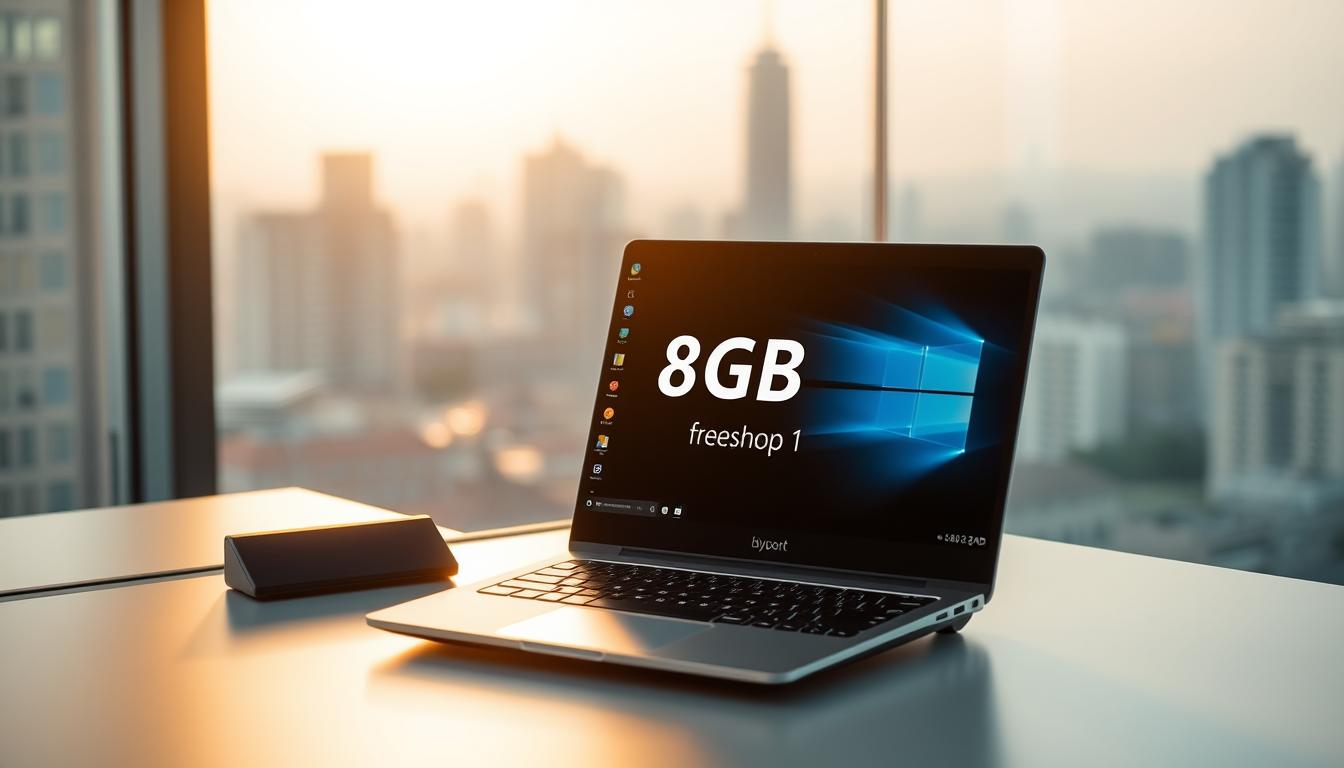
Key Takeaways
- The importance of RAM in coding performance
- Factors that influence the ideal RAM size for coding
- How different RAM configurations impact coding tasks
- The role of processors in conjunction with RAM
- Recommendations for choosing the right RAM size
The Critical Role of RAM in Your Coding Journey
The amount of RAM in your system greatly affects your coding experience. It impacts how fast your code compiles, runs, and manages memory. Having enough RAM makes your coding environment run smoothly. This lets you code, test, and debug more efficiently.
How RAM Impacts Code Compilation and Execution
RAM is key in code compilation and execution. The compiler needs RAM to load and process the code. Not enough RAM can cause slow compilation, slow IDEs, and lower productivity.
Big projects with many dependencies can be memory-heavy. This slows down the compilation. As John Doe, a famous software developer, said, “Having enough RAM is like having a superpower for coders – it makes everything faster and more manageable.”
Memory Management During Development
Good memory management is crucial during development. RAM lets you run many apps at once, like your IDE, database, and web server. Enough RAM means these apps run together without slowing down too much.
For example, when working on a web project, enough RAM lets you use your IDE, a local server, and a database at the same time. This makes your work flow better. As apps get more complex, so does the need for more RAM to handle memory-heavy tasks well.
“RAM is the backbone of any development setup. Without enough of it, even the most powerful CPU can be bottlenecked.”
Jane Smith, Developer Advocate
How Much GB RAM Do You Need for Coding?
As a coder, knowing how much RAM you need is key for a smooth development environment. The RAM needed can change a lot. It depends on your project’s complexity, the programming languages you use, and your tools.
Entry-Level Requirements (4GB-8GB)
For simple coding tasks, 4GB to 8GB of RAM is enough. This amount works well for basic coding in simple languages or web development. But, as projects get more complex, this RAM might not be enough.
Mid-Range Needs (16GB)
16GB of RAM is a good choice for many coders. It lets you work on complex projects, do multiple tasks at once, and use many tools without slowdowns. It’s a favorite among developers with varied projects.
Professional Requirements (32GB+)
For experts on big, demanding projects or those doing heavy data work, 32GB or more is needed. This amount of RAM makes sure tough tasks run smoothly.
Here’s a quick look at RAM needs for different coding tasks:
| Coding Scenario | RAM Requirement | Description |
|---|---|---|
| Basic Coding | 4GB-8GB | Suitable for simple projects and lightweight programming languages. |
| Standard Development | 16GB | Ideal for most coding tasks, allowing for multitasking and running multiple tools. |
| Complex Projects | 32GB+ | Necessary for resource-intensive projects, data processing, and large-scale applications. |
Is 8GB RAM Enough for Programming and Coding?
As a developer, you might wonder if 8GB RAM is enough for coding. It depends on your projects, tools, and workflow. Let’s look at how 8GB RAM performs in coding tasks.
We’ll use the Lenovo IdeaPad Slim1 as an example. It has 8GB RAM, a 512GB SSD, and an Intel Celeron N4020 processor. This makes it perfect for our analysis.
The Lenovo IdeaPad Slim1 Example: Real-World Performance
The Lenovo IdeaPad Slim1 is a budget-friendly laptop. It’s popular among students and new developers. Its specs are great for testing 8GB RAM in coding.
Specifications Overview: How much GB RAM do you need for coding?
The Lenovo IdeaPad Slim1 has 8GB RAM. This is enough for running many apps at once. The 512GB SSD makes apps and files load fast. The Intel Celeron N4020 processor is good for basic coding tasks.
The Lenovo IdeaPad Slim1 does well for small to medium-sized coding projects. But, it slows down with big projects or many resource-heavy apps. This shows 8GB RAM’s limits.
Where 8GB RAM Excels and Falls Short
8GB RAM works well for simple coding tasks like web development or small Python scripts. But, it struggles with complex tasks like running virtual machines or large Java apps. For most coding, 8GB RAM is okay, but for complex projects, you might need more.
The 16GB Standard: Why Most Coders Choose This Option
For coders, 16GB of RAM is the perfect balance of performance and cost. It’s a standard choice because it efficiently handles most coding tasks.
How much GB RAM do you need for coding?
One big reason coders choose 16GB of RAM is for multitasking. With 16GB, you can run many apps at once without slowdown. For example, you can have your IDE open with multiple browser tabs, a database manager, and other tools without lag.
This multitasking is key for today’s development work. Switching between tasks and tools is common. With enough RAM, you stay productive and focused on your work.
Future-Proofing Your Development Setup
Choosing 16GB of RAM also future-proofs your setup. As software and apps grow, they need more memory. With 16GB, your system is ready for updates and demanding tasks.
This smart choice saves you from needing to upgrade RAM soon. It’s also cost-effective in the long run. Plus, it lets you use the latest tech and development environments that need more memory.
Power Users: When 32GB+ RAM Becomes Necessary
For power users, 32GB or more RAM is essential. It’s needed for complex development environments. As coding projects grow, so does the need for memory.
Complex Development Environments
Complex environments have many projects running at once. They have lots of dependencies and libraries. With 32GB+ RAM, each part loads quickly, avoiding slowdowns.
This is key for developers on big projects with many microservices.
Virtual Machines and Containerization
Virtual machines and Docker are common in development. Running many VMs or containers uses a lot of RAM. With 32GB+ RAM, developers can manage several without slowdowns.
This makes testing and deploying apps in different environments easier.
How much GB RAM do you need for coding?
Big enterprise apps need lots of RAM for large data and complex logic. Developers on these projects need 32GB+ RAM to work efficiently. This is true for apps that do data analytics or machine learning.
| RAM Size | Complex Development Environments | Virtual Machines and Containerization | Enterprise-Scale Applications |
|---|---|---|---|
| 8GB | Limited multitasking capability | Difficulty running multiple VMs/containers | Insufficient for large-scale applications |
| 16GB | Better multitasking, but still limited | Can run a few VMs/containers, but with limitations | May struggle with very large datasets |
| 32GB+ | Smooth performance with multiple projects | Efficiently runs multiple VMs/containers | Handles large datasets and complex logic |
How much GB is good for coding?
Knowing how much RAM different programming languages need is key for coding well. The RAM needed affects how fast your code runs and how quickly it’s compiled.
Lightweight Languages: Python, JavaScript, Ruby
Python, JavaScript, and Ruby are favorites among developers. They are easy to use and flexible. These languages need less RAM to work well.
- Python: For simple scripts, Python needs 2-4 GB of RAM. But, for big data science or machine learning projects, it might need 8-16 GB.
- JavaScript: JavaScript’s RAM use depends on the browser or Node.js. Usually, 4-8 GB is enough for most tasks.
- Ruby: Ruby on Rails apps work well with 4-8 GB of RAM. But, bigger apps or those with many gems might need 8-16 GB.
How much GB is good for coding?
Some languages need more RAM to run smoothly.
- Java: Java apps, with complex frameworks or big data, might need 8-16 GB or more of RAM.
- C++: C++ can be compiled with little RAM. But, big projects with many dependencies or large binaries might need 16 GB or more.
- Rust: Rust’s RAM needs vary with project complexity. For most tasks, 8-16 GB is enough. But, bigger projects might need more.
How Much RAM Do You Need for Python Development?
Python development needs vary based on project complexity. It’s used in web development, scripting, data science, and machine learning.
The RAM needed depends on the project and libraries used. Basic scripting needs little RAM. But, tasks with Pandas and NumPy require more.
How much GB RAM do you need for coding?
For simple Python scripts or small apps, 4GB to 8GB RAM is enough.
As noted by
“Python is a great language for beginners and experienced developers alike, and its simplicity makes it ideal for scripting tasks.”
Guido van Rossum, Python creator
Data Science Libraries and Frameworks
Data science libraries like Pandas, NumPy, and scikit-learn need more RAM. They handle big datasets efficiently.
| Library | RAM Requirement | Use Case |
|---|---|---|
| Pandas | 8GB-16GB | Data manipulation and analysis |
| NumPy | 8GB-16GB | Numerical computing |
| scikit-learn | 16GB+ | Machine learning |
Machine Learning and AI Development
Machine learning and AI need a lot of RAM. Models need memory to train, even with big datasets.
Key considerations for machine learning and AI development:
- Model complexity
- Dataset size
- Batch size during training
How much RAM does a coder need?
As a developer, knowing how much RAM your IDE and tools need is key for top performance. The RAM needed can change a lot based on your development tasks and tools.
IDEs and tools are vital for coding, debugging, and testing. Their RAM needs vary with their features and what they can do.
Lightweight Text Editors vs. Full-Featured IDEs
Lightweight text editors like Sublime Text or Atom are quick and use less RAM, usually 100-500 MB. On the other hand, full-featured IDEs like IntelliJ IDEA, Visual Studio, or Eclipse have more tools and need more RAM, often 1-4 GB or more.
For big projects, a full-featured IDE like IntelliJ IDEA might use 2-3 GB of RAM. A lightweight editor like Sublime Text might only use 200-300 MB for the same project.
- Lightweight editors: 100-500 MB RAM
- Full-featured IDEs: 1-4 GB RAM or more
Browser-Based Development Environments
Browser-based environments like GitHub Codespaces or Repl.it are becoming more popular. They run in the browser and can use more RAM because of the browser’s needs. They usually need at least 2-4 GB of RAM, but this can change based on the project’s complexity.
Running Multiple Development Tools Simultaneously
Many developers use several tools at once, like an IDE, a database client, and a version control system. Using many tools at once can really increase RAM use. For example, using IntelliJ IDEA, a MySQL client, and a Docker container together can use 6-8 GB of RAM or more.
To manage RAM well, it’s important to watch your system’s resource use and adjust your work flow. Closing apps you don’t need or getting more RAM can help keep things running smoothly.
- Monitor system resource usage
- Close unnecessary applications
- Consider upgrading your RAM
Mobile App Development: RAM Considerations
Mobile app development environments like Android Studio and Xcode need specific RAM amounts. This can greatly affect how well you work. It’s key to know how different tools use RAM.

Android Studio Requirements
Android Studio is the top choice for Android app making. It offers many features to make development easier. But, these features also mean it uses more RAM.
The minimum RAM needed for Android Studio is 8GB. But, 16GB or more is better for smooth work. This is true, even more so for big projects or working on many at once.
Google says, “For the best performance, you should have 16GB or more of RAM.” This is very important. The Android Emulator, for example, uses a lot of RAM.
How much RAM does a coder need?
Xcode is the main tool for iOS app making. It’s pretty efficient but still needs enough RAM. A minimum of 8GB RAM is needed, but 16GB or more is best for big projects or using many tools at once.
Apple’s guide says, “Xcode is a powerful tool. Having enough RAM lets it handle your project’s needs.”
Is 8GB RAM enough for programming and coding?
Knowing how much RAM you need for web development is key to coding efficiently. Web development covers a wide range of tasks, from frontend to backend and full-stack. Each area has its own RAM needs, depending on the tools, frameworks, and project complexity.
Frontend Development
Frontend development focuses on client-side code, using HTML, CSS, and JavaScript. For most frontend projects, 8GB of RAM is enough. But, for complex projects with frameworks like React or Angular, or big apps, 16GB of RAM boosts performance. Tools like Webpack and Babel also benefit from more RAM.
Backend Development
Backend development deals with server-side logic, database integration, and API connectivity. It usually needs more RAM than frontend, mainly for big databases or complex server logic. For backend tasks, 16GB of RAM is a good start. But, for apps with many connections or complex tasks, 32GB of RAM or more is needed.
Full-Stack Development Environments
Full-stack development combines frontend and backend, making it the most RAM-intensive. Full-stack developers run multiple apps at once, like frontend and backend servers, and databases. For full-stack, 16GB of RAM is the minimum. But, 32GB or more is better for complex projects or virtual machines.
In short, while RAM needs vary, 16GB of RAM is a good starting point for most web development. For complex or demanding projects, or full-stack development, 32GB of RAM or more can greatly improve productivity and performance.
Game Development: Why RAM Matters
Game development needs a lot of RAM. Modern games have detailed graphics and complex physics. They also have large open worlds.
Choosing the right game engine is key. Engines like Unity and Unreal Engine help create advanced games. But, they also need a lot of RAM.
Unity and Unreal Engine Requirements
Unity and Unreal Engine are top game engines. Unity suggests at least 8 GB of RAM for most projects. But, for complex ones, 16 GB or more is better.
Unreal Engine is more demanding. It needs at least 16 GB of RAM. For big projects, 32 GB or more is recommended.
| Game Engine | Minimum RAM | Recommended RAM |
|---|---|---|
| Unity | 8 GB | 16 GB+ |
| Unreal Engine | 16 GB | 32 GB+ |
Is 8GB RAM enough for programming and coding?
Asset creation and 3D modeling need a lot of RAM. High-resolution textures and complex 3D models require a lot of memory. For example, a high-poly 3D model can use over 4 GB of RAM.
According to
“The key to efficient asset creation is having enough RAM to handle large files and complex scenes without running into memory limitations,”
In summary, game development needs a lot of RAM. This is true for engines like Unity and Unreal Engine. Having enough RAM helps with both development and asset creation.
Maximizing Performance with Your Current RAM
You can boost your coding speed without adding more RAM. By tweaking your development setup, you can make your RAM work better. This means faster code writing and running.
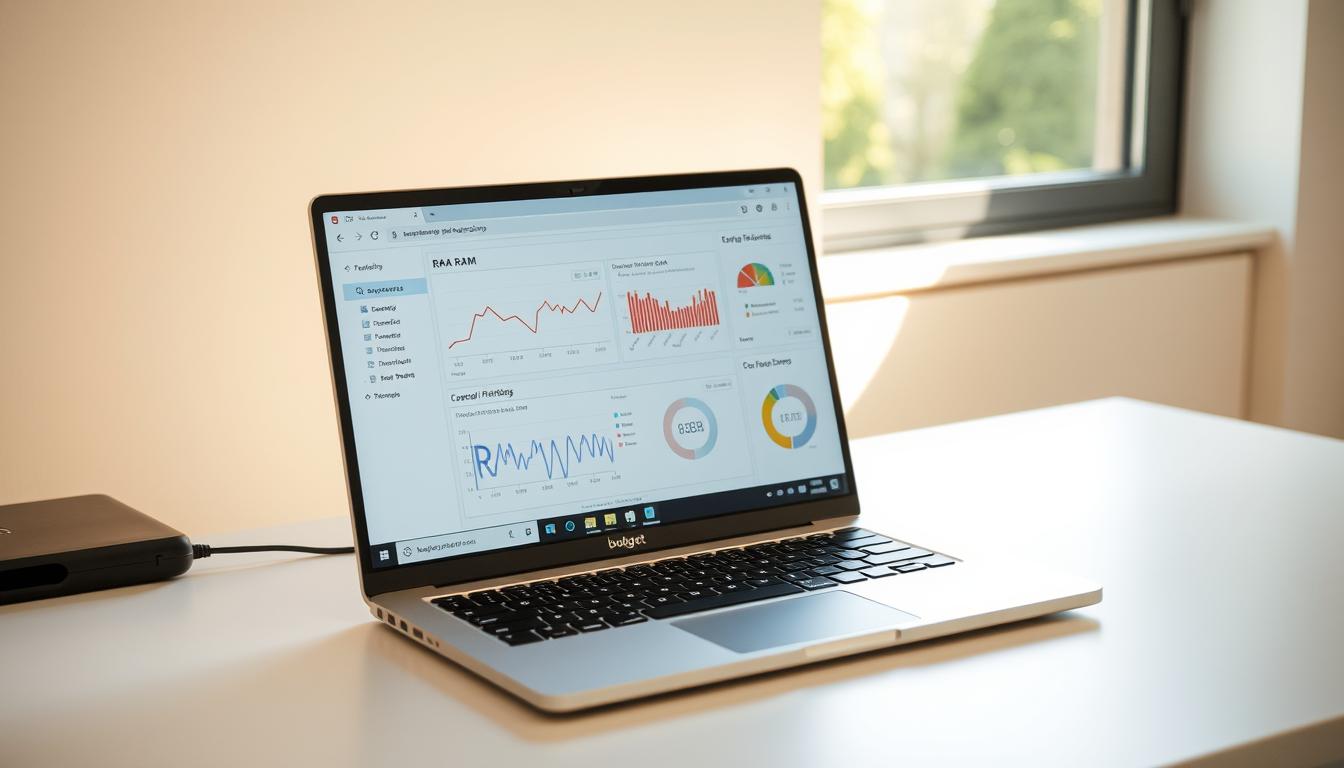
Optimizing IDE Settings
Improving your Integrated Development Environment (IDE) settings is key. Here’s how:
- Turn off plugins you don’t need to save memory
- Adjust settings for code completion and inspection for better speed
- Use the IDE’s tools to find and fix memory leaks
Managing Background Processes
Keeping an eye on background tasks is vital. Here’s what to do:
- Close apps and processes you don’t need to free up RAM
- Use task managers to spot heavy users of resources
- Run big tasks when you’re not coding
Virtual Memory and Swap Space
Knowing about virtual memory and swap space helps too. Virtual memory lets your system use hard drive space as extra RAM. But, it’s slower. Having enough swap space helps avoid memory errors, but it’s not a replacement for real RAM.
To make the most of virtual memory, consider:
- Make sure your hard drive has enough space for swap files
- Watch swap space use to see if you need more RAM
- Change system settings to better use virtual memory
RAM vs. Other Hardware:How much RAM do you need for Python?
A good development setup needs more than just enough RAM. It’s about mixing different hardware parts well. RAM is key for handling lots of tasks and big data. But, CPU, SSD, and graphics cards are also important for system performance.
It’s important to know how these parts work together. This helps make your development setup better.
CPU and RAM Synergy
The CPU and RAM work together to do tasks well. A fast CPU can process things quickly. But, if there’s not enough RAM, it has to wait for data from slower storage.
On the other hand, having lots of RAM but a slow CPU means memory isn’t used well.
Key Considerations:
- Make sure CPU and RAM speeds match to avoid slowdowns
- Have enough RAM for tasks that use a lot of CPU power
SSD Impact on Development Workflow
SSDs make development faster by cutting down on wait times. They make systems more responsive and help you work better. With enough RAM, an SSD makes coding much smoother.
| Storage Type | Load Time | Overall Responsiveness |
|---|---|---|
| HDD | Slow | Poor |
| SSD | Fast | Excellent |
Integrated vs. Dedicated Graphics for Coding
For most coding, integrated graphics are enough. But, for game development or apps that need lots of graphics, a dedicated graphics card is better.
It’s all about finding the right balance between RAM and other hardware. Knowing how CPU, SSD, graphics, and RAM work together helps developers work better and faster.
Conclusion: Selecting the Right RAM Size for Your Coding Needs
Choosing the right RAM size for coding is not simple. It depends on many things. These include the programming languages you use, the complexity of your projects, and the tools you develop with.For example, if you’re using languages like Python or JavaScript, 8GB of RAM might be enough for simple tasks. But, if you’re working on big projects like data science or machine learning, you might need 16GB or 32GB of RAM. This ensures your work runs smoothly.
PROS:
Think about what you need for your coding work.How much GB RAM do you need for coding? Do you use complex tools or run many virtual machines? If yes, you might need more RAM to keep everything running well.
CONS:
In the end, finding the right RAM size is about matching your coding needs with the right hardware.How much GB RAM do you need for coding? By picking the right RAM, you can make your development work better. This boosts your productivity and prepares your coding space for the future.
DESCRIPTION:
Wondering how much GB RAM you need for coding? Discover 5 powerful reasons why 8GB RAM is more than enough for most developers—boost efficiency, focus, and real-world performance without overspending
FAQ
How much GB RAM do you need for coding?
The amount of RAM needed for coding depends on the project type, programming languages, and tools used. For beginners, 8GB RAM is enough. Mid-range needs call for 16GB, and professionals often need 32GB Read more…
Is 8GB RAM enough for programming and coding?
8GB RAM works for simple coding tasks, like in the Lenovo IdeaPad Slim1 laptop. But, it might not be enough for complex projects or when you need to multitask Read more…
How much RAM do you need for Python development?
For basic Python scripting, 8GB RAM is okay. But, if you’re working with data science or AI, you’ll need at least 16GB RAM Read more…
How much GB is good for coding?
The right RAM size for coding depends on your needs. 16GB RAM is a good middle ground for most coders. But, for very complex projects, you might need 32GB or more Read more…
What is the ideal RAM size for coding with IDEs and development tools?
IDEs and development tools have different RAM needs. Simple text editors need less RAM. But, full-featured IDEs and many tools running at once need at least 16GB RAM Read more…
How much RAM is required for mobile app development?
Android Studio needs at least 8GB RAM, but 16GB or more is better. For iOS with Xcode, 8GB RAM is enough. But, 16GB or more makes things smoother.
What are the RAM needs for web development?
Frontend development can get by with 8GB RAM. But, backend and full-stack development need more, usually 16GB or more.
How much RAM is necessary for game development?
Game development needs a lot of RAM, like when using Unity or Unreal Engine. You’ll need at least 16GB RAM. But, 32GB or more is better for smoother performance.vAs a coder, I’ve been asked many times about the best RAM size for coding. With so many programming languages and tools, finding the right RAM can be tough. I remember a project where I needed lots of RAM to handle many apps at once.
DESCLAIMER:
This post may contain affiliate links. If you click on one of these links and make a purchase, I may earn a small commission at no extra cost to you. I only recommend tools and products that I genuinely believe in and use myself. Your support helps keep this content free and useful—thank you!
BUY NOW
RELATED TAGS:
How much RAM do I need for coding?
What GB RAM is good for programming?
Is 4GB RAM enough for coding?
Is coding a heavy task?
How much GB is good for coding?
Is higher RAM better for coding?
Is 8 GB RAM enough for Python?

